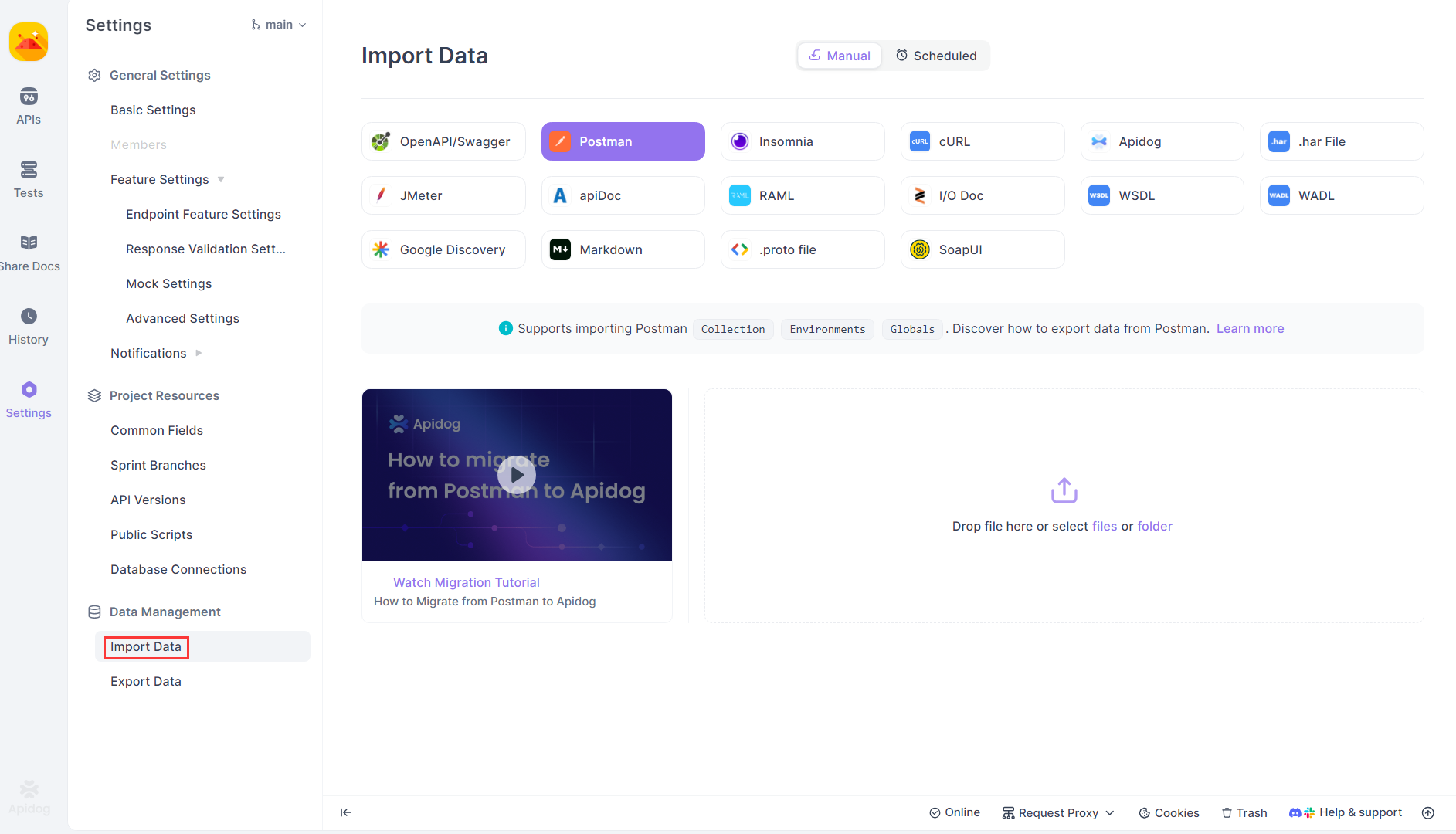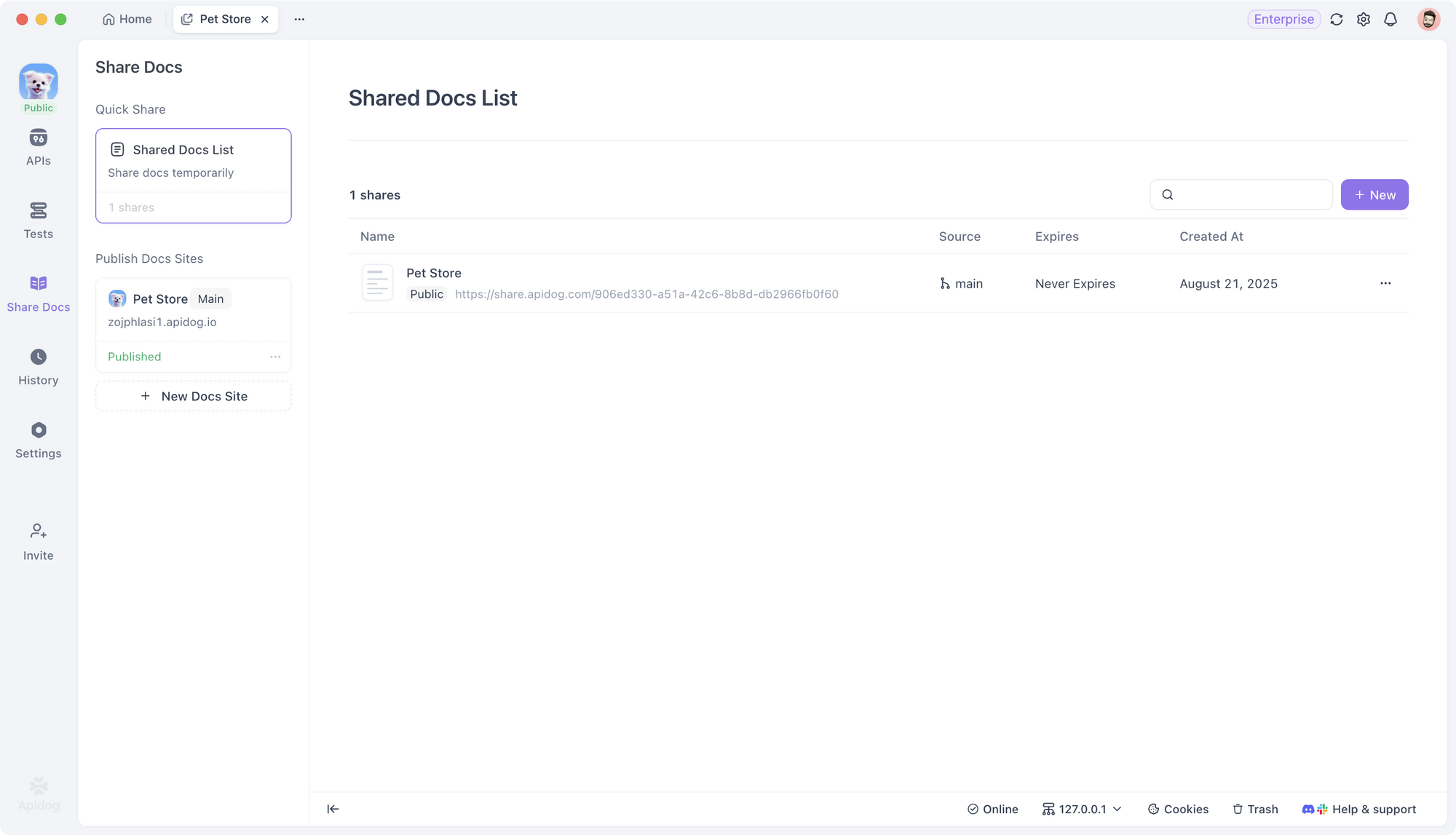Apidog = Postman + Swagger Editor + Swagger UI + Stoplight + ReadMe + JMeter + SoapUI + Mock
Are you tired of juggling multiple API tools? Frustrated with Postman's limitations or pricing? Let me introduce you to Apidog - an integrated platform that's revolutionizing how teams design, mock, test, debug and document APIs.
Watch the Complete Video Tutorial about Apidog
Below is the main content of this video tutorial.
Why Teams Are Choosing Apidog Over Postman
Apidog is gaining massive popularity as the go-to alternative to Postman, and for good reason. This isn't just another API testing tool - it's a complete API development platform that combines the functionality of multiple tools into one seamless interface.
The All-in-One Solution
Think about it: no more copying and pasting between different API tools. Apidog replaces:
- Postman - API testing and development
- Swagger Editor & UI - API documentation
- Stoplight - API design
- ReadMe - Documentation hosting
- JMeter & SoapUI - Performance and automation testing
- Mock servers - API mocking
Key Features That Set Apidog Apart
1. Design-First API Development

Apidog embraces a true design-first approach to API development. You can:
- Design APIs visually with an intuitive interface
- Define and reuse schemas across your project
- Generate API specifications directly from requests
- Automatically recognize JSON, XML, and SQL schemas
2. Superior Debugging Capabilities

While Postman offers basic pre and post-request scripts, Apidog takes it further with:
- Response validation built-in
- Direct database connectivity (a major advantage over Postman)
- Visual assertions without complex scripting
- Console logging and detailed request inspection
3. Advanced Mock Server

Postman's mocking feature is basic and limited. Apidog provides:
- Smart mock engine with dynamic data generation
- Cloud-hosted mock servers
- Customizable mocking scripts
- Mock servers optimized for load testing
4. Rich API Documentation

Generate beautiful, interactive API documentation that rivals dedicated documentation platforms:
- Custom domain support
- Custom documentation layouts
- Markdown page support
- One-click publishing and sharing
5. Automatic API Test with Visual Designer

Testing plays a critical role in the API lifecycle. It validates API endpoints, methods, and integrations, ensuring that they function as expected.
Getting Started with Apidog
Installation and Setup
Getting started is incredibly simple:
- Visit apidog.com
- Download the desktop client (Windows, Mac, or Linux) or use the web app
- Create your free account
- Start building!
No credit card required. No hidden fees.
Pricing That Makes Sense
Free Tier:
- Up to 4 team collaborators
- 5 different projects
- Unlimited API executions
- All core features included
- Apidog CLI for CI/CD integration
Paid Plans:
- Basic: $9/user/month - Perfect for small teams
- Professional: Advanced features for growing teams
- Enterprise: Custom solutions for large organizations
Compare this to Postman's pricing, and the value becomes crystal clear.
Hands-On Tutorial: Building Your First API Project
Let me walk you through creating a complete API project in Apidog using the GoRest API as an example.
Step 1: Create Your Project
- Open Apidog and create a new team (e.g., "Naven Automation Labs")
- Create a new HTTP project (e.g., "GoRest APIs")
- Choose your language preference (English, Japanese, or Portuguese)
Step 2: Set Up Your Environment
Environments in Apidog work similarly to Postman but with enhanced features:
- Click on Environments in the sidebar
- Create a new environment (e.g., "GoRest Environment")
- Define your base URL:
https://gorest.co.in - Add variables like authentication tokens:
- Variable name:
token - Type:
Secret(for sensitive data) - Value: Your API bearer token
Step 3: Create Your First API Endpoint
GET Request Example:
- Click New under Endpoints
- Select your environment (the base URL is automatically applied)
- Add your endpoint path:
/public/v2/users - Click Send to test
- Save with a meaningful name: "Get Users API"
- Organize in folders for better structure
POST Request Example:
1. Create a new endpoint with POST method
2. Path: /public/v2/users
3. Add authorization header:
- Key:
Authorization - Value: Select your
{{token}}variable from the dropdown
4. Add JSON body:
{
"name": "Naven",
"gender": "male",
"email": "apidog@gmail.com",
"status": "active"
}5. Save as "Create Fresh User"
Step 4: Use Dynamic Variables

Here's where Apidog shines. Instead of hardcoding values:
- Click Insert Dynamic Value in any field
- Choose from data generators:
- Internet → Email (generates random emails)
- Names → First Name, Last Name
- Numbers → Random integers
- Dates → Various date formats
- And many more!
Example: {{$internet.email}} automatically generates unique email addresses for each request.
Step 5: Generate Client Code
Need to implement your API call in code? Apidog generates ready-to-use code in multiple languages:
- cURL (Windows & Linux)
- JavaScript/Node.js
- Python (requests, http.client)
- Java (Unirest)
- Go
- PHP
- Ruby
- C#
And more!
Simply click the Code button and copy the implementation you need.
Advanced Testing Features
Creating Test Scenarios

Apidog separates API design from testing - a cleaner approach than Postman:
- Navigate to the Test section
- Create a new test scenario
- Add test steps by importing from your endpoints
- Define priority (P1, P2, P3)
- Add tags (e.g., "sanity", "regression")
Visual Assertions
This is a standout feature. Instead of writing complex scripts, use visual assertions:
Example: Check User ID
- Response path:
$[0].id - Condition:
exists - No scripting required!
Example: Validate Username
- Response path:
$.name - Condition:
equals - Expected value:
Naven
Custom Scripts
For advanced users, Apidog supports custom scripts similar to Postman:
// Check status code
pm.test("Status code is 200", function () {
pm.response.to.have.status(200);
});
// Extract and save data
var jsonData = pm.response.json();
pm.environment.set("bookingId", jsonData.bookingId);Batch Test Execution

Run multiple test scenarios together:
- Select multiple test cases
2. Click Batch Run
3. View consolidated results
4. Export HTML reports automatically
No 25-run limit like Postman!
Collaboration Features
Branching System

Apidog includes a Git-like branching system for API development:
- Work in the main branch for stable APIs
- Create sprint branches for new features
- Make changes without affecting the main branch
- Merge changes back when ready
Example workflow:
- Create "Sprint 1" branch from main
- Add new DELETE endpoint
- Test thoroughly
- Merge back to main
- Team members automatically see updates
Team Collaboration

Invite team members easily:
- Via email or shareable link
- Define permissions: Admin, Editor, or Read-only
- Real-time collaboration
- Shared environments and collections
CI/CD Integration

Integrate your API tests into any CI/CD pipeline:
- Generate your access token in Apidog
- Export your collection as JSON
- Run from command line:
apidog run collection.json --token YOUR_ACCESS_TOKENSupported CI/CD platforms:
- Jenkins
- GitLab CI
- GitHub Actions
- CircleCI
- Travis CI
- Any custom pipeline
Scheduling Test Runs
Schedule automated test execution:
- Daily, weekly, monthly, or hourly
- Specific time configuration
- Automatic notifications
- No additional cost!
Migrating from Postman

Worried about switching? Don't be. Migration is seamless:
Import Postman Collections into Apidog

- Export your Postman collection (JSON format)
- Export your Postman environment variables
- In Apidog, click Import
- Select Postman as the source
- Drag and drop your files
- Click Confirm
What gets imported:
- All API endpoints
- Environment variables
- Pre-request scripts
- Test scripts
- Examples
- Folder structure
Script Compatibility
Apidog maintains backward compatibility with Postman scripts:
pmobject works as expectedpm.environment,pm.response,pm.testall supported- No need to rewrite your existing scripts!
API Documentation
Publishing Documentation

Create beautiful, shareable API documentation:
- Go to Share section
2. Click New Documentation
3. Configure:
- Title and description
- Select environment
- Choose endpoints to include
4. Click Save
Your documentation is instantly available with:
- Interactive "Try it out" feature
- Automatic schema generation
- Clean, professional layout
- Custom domain support (paid plans)
Schema Management
Define reusable schemas for consistency:
- Create schema with fields (ID, name, email, etc.)
- Specify data types (integer, string, boolean)
- Add descriptions and validations
- Reuse across multiple endpoints
Database Connectivity

A major advantage over Postman - direct database connections:
Supported databases:
- ClickHouse
- MongoDB
- Redis
- MySQL
- PostgreSQL
- And more (in paid plans)
Use cases:
- Validate data directly in database
- Set up test data before API calls
- Clean up after test execution
- Complex data validation scenarios
Best Practices
1. Environment Management
- Create separate environments for Dev, Test, and Production
- Use secret variables for sensitive data
- Leverage global variables for common values
2. Folder Organization
- Group related endpoints in folders
- Use clear, descriptive names
- Maintain consistent naming conventions
3. Dynamic Data
- Always use dynamic variables for unique data (emails, IDs)
- Leverage built-in data generators
- Avoid hardcoded test data
4. Test Scenarios
- Write atomic test cases (one purpose per test)
- Use meaningful test names
- Add tags for easy filtering
- Organize in logical test suites
5. Documentation
- Keep documentation updated with API changes
- Add clear descriptions to all endpoints
- Include example requests and responses
- Document authentication requirements
Comparison: Apidog vs Postman
| Feature | Postman | Apidog |
|---|---|---|
| Design APIs Visually | ✓ | ✓ |
| Schema Definition & Reuse | ✗ | ✓ |
| Generate Spec from Request | ✗ | ✓ |
| Database Connectivity | ✗ | ✓ |
| Visual Assertions | ✗ | ✓ |
| Collection Runs (Free) | 25/month | Unlimited |
| Test Reports | Limited | Full HTML reports |
| Mock Server | Basic | Advanced with smart engine |
| Free Collaboration | 3 users | 4 users |
| Branching System | ✗ | ✓ |
| CLI Tool | ✓ | ✓ |
Real-World Use Cases
1. API Development Teams
Design-first approach ensures:
- Clear API contracts before implementation
- Reduced miscommunication
- Faster development cycles
- Better documentation from day one
2. QA Engineers
Comprehensive testing capabilities:
- Manual and automated testing in one tool
- Visual assertions reduce scripting time
- Unlimited test runs for thorough validation
- Easy CI/CD integration
3. Full-Stack Developers
Everything in one place:
- Design APIs
- Test during development
- Generate client code
- Share documentation with frontend team
4. DevOps Teams
Seamless integration:
- CLI for pipeline integration
- Scheduled test execution
- Automated reporting
- Environment management
Tips and Tricks
1. Keyboard Shortcuts
Speed up your workflow:
Ctrl/Cmd + S- Save current requestCtrl/Cmd + Enter- Send requestCtrl/Cmd + N- New request
2. Quick Testing
Use the Send button in any endpoint for quick validation before saving to test scenarios.
3. Response Visualization
Switch between response views:
- Pretty - Formatted JSON/XML
- Raw - Unformatted response
- Preview - Rendered HTML
- Visualize - Custom visualizations
4. History Tracking
Access all previous requests:
- Date-wise history
- Shared history with team
- Quick re-execution
5. Global Settings
Configure once, use everywhere:
- Default timeout values
- SSL certificate settings
- Proxy configuration
- Request/response size limits
Common Questions
Q: Is Apidog really free?
A: Yes! The free tier includes all core features, unlimited API executions, and collaboration for up to 4 users.
Q: Can I use Apidog offline?
A: Yes, the desktop client works offline. Sync happens when you reconnect.
Q: How secure is my data?
A: Apidog uses enterprise-grade encryption. Secret variables are encrypted at rest and in transit.
Q: Can I export my data?
A: Absolutely. Export collections in multiple formats (OpenAPI, Apidog, Markdown) anytime.
Q: Does it support GraphQL?
A: Yes! Apidog supports REST, GraphQL, and WebSocket APIs.
Q: What about SOAP APIs?
A: SOAP is supported. Import WSDL files directly.
Conclusion
Apidog represents the next generation of API development tools. By combining design, testing, documentation, and mocking into a single, intuitive platform, it eliminates the friction of switching between multiple tools.
Whether you're a solo developer, a QA engineer, or part of a large development team, Apidog offers:
✓ Powerful features that rival or exceed Postman
✓ Generous free tier with no artificial limitations
✓ Seamless collaboration with built-in branching
✓ True design-first approach to API development
✓ Unlimited testing without monthly caps
✓ Easy migration from existing tools
The best part? You can start using it right now, completely free, with no credit card required.



